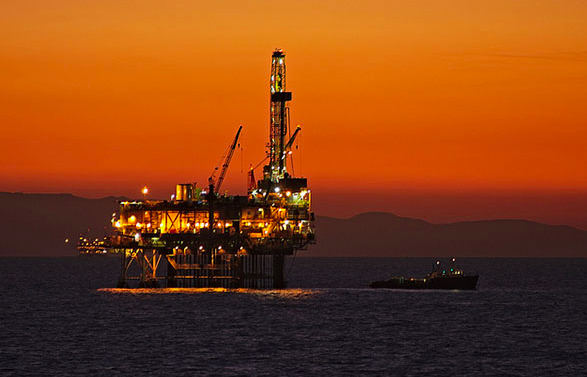Africa has become a key testing ground for floating liquefied natural gas pioneers. FNLG spending in Africa is forecasted to reach $15.4bn out of a global total of $42bn, in the period 2019-24.
When the first wave of floating liquefied natural gas (FLNG) projects was conceived at the beginning of this decade, it was hard to envisage that Africa would become a prime testing ground for the technology. The idea of liquefying gas for export in a floating facility located above offshore gas reserves made as much sense in Africa as anywhere else. The technology offered a cheaper way to exploit offshore gas reserves than building pipelines and developing permanent onshore infrastructure.
In particular, it could make possible the exploitation of smaller “stranded” reserves, whose economics wouldn’t stack up with a costly onshore development. And re-usability helped too – when a field’s reserves were depleted, an FLNG facility could simply be moved somewhere else. But the highest profile project, Shell’s Prelude facility – the world’s largest floating structure – was destined for offshore Western Australia and had an estimated price tag of $12bn or more – way beyond the scale of investment usually ploughed into African hydrocarbons projects, even in established exporting nations such as Nigeria and Angola.
But, in May 2018 – nearly six years after Prelude’s construction started and before it was operational – Golar LNG’s Hilli Episeyo, moored off Kribi, Cameroon, became only the world’s second FLNG facility to start production. The first was Petronas’ PFLNG Satu in Malaysia. In late August, Golar’s chief executive, said on a media conference call, that the facility was poised to ship its sixth cargo. He said that all four trains on the facility had been successfully tested, though only two, producing a total of 1.2m t/y of LNG, were currently being used. On the other side of the continent, a consortium led by Italy’s Eni is already building a 3.4m t/y FLNG facility to operate on the Coral South development from 2022. These will be the first exports from Mozambique’s huge offshore reserves In the Rovuma Basin
And there’s more planned for West Africa. BP plans to use a Golar design for FLNG exports from the Tortue/Ahmeyim gas field that straddles the maritime border between Senegal and Mauritania from around 2021 (see also Senegal article). UK-based Ophir Energy also plans to use a Golar design to liquefy gas from its Fortuna LNG project off Equatorial Guinea, if it can secure the investment it needs. Meanwhile, London-based New Age is seeking to develop FLNG projects in Cameroon and Congo-Brazzaville. Westwood Energy, a consultancy, forecasts FLNG spending in Africa will amount to $15.4bn out of a global total of $42bn, in the period 2019-24.
Rosy demand outlook
So, what happened to pique the interest of investors in this pioneering technology? One important factor is that global LNG demand has been rising fast in recent years, lifting prospects for the whole sector. While the massive expansion of onshore LNG export capacity in Australia and the advent of US LNG exports have saturated the market in the last two years, most forecasters believe demand will start outstripping supply in the early 2020s, providing the prospect of healthy returns for those that can get LNG to market then. Golar said in its second-quarter 2018 results statement that it expected the LNG market to balance in 2022, with a supply gap of around 50m t/y by 2025.
But perhaps the most important change has been falling costs. Since Prelude was conceived, the investment needed to build FLNG has dropped sharply. Whereas Shell estimated that Prelude would cost some $3.5bn per million tonnes of annual production capacity, the figure for LNG from Golar’s Hilli Episeyo is thought to be well under $1bn per million tonnes.
That has been achieved largely by using off-the-peg, modular technology bolted onto a converted LNG carrier. It’s a no-frills approach compared to Prelude, which was built from scratch to produce a range of products besides LNG and to operate in much more demanding ocean conditions than those likely to encountered by Golar’s conversions.
FLNG also has the added advantage of keeping hydrocarbons investment clear of the perceived risks associated with developing onshore projects in coastal regions that may be remote from main population centres with limited access to infrastructure and skilled labour.
Lower risk
A project involving a vessel built in an Asian shipyard and then deployed without necessarily even going to port in the country where it is deployed is an attractive one for risk-averse international investors. It’s a similar rationale to that already evident with the successful development of offshore oil developments using floating production storage and offtaking vessels (FPSOs) in countries such as Angola and Nigeria, where onshore developments may be considered a risk.
That doesn’t always go down well with those who want the local economy to benefit directly from construction jobs and infrastructure development. But increasingly, African governments seem to be taking the view that if the choice is between export revenues from FLNG or no LNG investment at all, then FLNG is worth going with.
A willingness to sanction relatively low-risk FLNG can also help get the onshore industry rolling, once an export industry has established. In Mozambique, following ENI’s decision in June 2017 to go ahead with the Coral South FLNG project, consortiums led by ExxonMobil and Anadarko are now pushing on with plans for onshore LNG plants in the northern Cabo Delgado region. If they are built, these will create local jobs, require local content and supply gas domestically as well as for export markets.
Credits to Ian Lewis (African Business Magazine)


